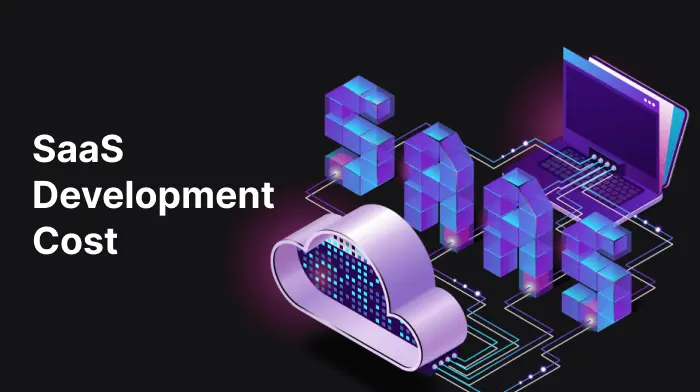
Introduction
The demand for software as a service development has taken off as more and more businesses make the switch to cloud-based solutions. This shift has been happening for a while now and is changing the way companies operate.
The way software is distributed has changed a lot in recent years. These days, applications are often hosted by companies and can be accessed from anywhere in the world using the internet. This approach is part of cloud computing, which also includes things like renting infrastructure and platforms.
It's clear that this model is really taking off. Last year, the global market for this type of software generated around $197 billion in revenue. That's two-thirds of all the money made from cloud services that are publicly available. This surge in growth shows how quickly companies are moving to adopt these solutions, which can help them:
- Run more smoothly
- Work together better
- Get more done
Understanding SaaS Development Costs
Building a SaaS product is a significant undertaking, and one of the most important things to consider is the cost. For startups and established companies looking to break into this market, it's crucial to get a handle on what it's going to take to get started.
The cost of developing a SaaS product can fluctuate depending on several key factors:
- What features you want to include
- How complicated they are
- Where your developers are based
All of these play a role in determining the final bill.
To make a budget and strategic plan that really works, you need to take a comprehensive look at every cost factor. This ensures that the resources you're using are aligned with what your business is trying to achieve and with what's standard in the market.
What Makes SaaS Products Different
SaaS products work differently from traditional software. These are applications that you can access directly from the internet, so you don't have to worry about downloading and installing them on your device.
This method, also known as cloud-based software, gives you several advantages:
- More accessible: You can use these applications from anywhere as long as you have an internet connection
- More scalable: You don't have to worry about running out of space on your device
- Unique payment model: Instead of buying the software outright, businesses pay for access to it
This can be a cost-effective way of using software, especially for businesses that are just starting out or don't have a lot of upfront capital to invest.
Building Your SaaS Product Strategy
Market Research and Planning
Building a SaaS product requires a comprehensive approach, whether you're launching a new company or making the switch from traditional software to the cloud. To start, it's crucial to understand what people really need.
Companies that thrive are the ones that solve real problems. Consider these key questions:
- What are your competitors doing?
- Who is your target audience?
- What are their biggest challenges?
- Where are the gaps in the market that your product could fill?
By doing thorough research, you can create a business model that meets people's needs and offers something that sets you apart.
Technology Stack Selection
The technology you choose to underpin your SaaS business plays a crucial role in how it will perform, how secure it is, and how easily it can grow.
Popular SaaS Technologies
| Category | Technology Options | Purpose |
|---|---|---|
| Frontend | React.js, Vue.js, Angular | User interface creation |
| Backend | Node.js, Python (Django/Flask), Ruby on Rails | Server-side functionality |
| Database | PostgreSQL, MongoDB, Firebase | Data management |
| Cloud Hosting | AWS, Google Cloud, Azure | Infrastructure and scaling |
| Security | OAuth, JWT, SSL encryption, 2FA | Authentication and protection |
MVP Development
MVP Development
When building a SaaS product, it's better to focus on core features rather than trying to create a fully-fleshed version from the start. This approach allows you to develop a Minimum Viable Product (MVP) that can be tested in the market right away.
The idea behind an MVP is to test out your business concept without investing too much upfront. You focus on the essentials - the features that are must-haves - and make sure users are getting something valuable out of it.
SaaS Development Cost Breakdown
Factors Affecting Development Costs
Several factors come into play when determining the cost of developing a SaaS product:
Project Complexity
Cost by Project Complexity
| Complexity Level | Price Range | Description |
|---|---|---|
| Micro SaaS | $10,000 - $25,000 | Basic functionality, minimal features |
| Basic SaaS | $25,000 - $50,000 | Standard features, simple integration |
| Medium SaaS | $50,000 - $150,000 | Advanced features, multiple integrations |
| Complex SaaS | $150,000 - $500,000+ | Enterprise-level, extensive customization |
Application Type Costs
Application Type
The specific type of SaaS application you want to build will have a significant impact on the overall cost and development time:
- Custom CRM system: $30,000 - $150,000
- E-commerce platform: $40,000 - $200,000
- ERP software: $50,000 - $250,000
- HRM software: $25,000 - $120,000
Development Team Location
The location of your development team can make a significant difference in terms of costs. North American, Western European, or Australian developers typically command higher rates than developers in countries like India or Eastern Europe.
Detailed Cost Components
Research and Development Phase
R&D Phase Costs
| Activity | Cost Range | Description |
|---|---|---|
| Market Analysis | $5,000 - $15,000 | Competitor research, target audience identification |
| Requirements Analysis | $3,000 - $10,000 | Documentation, stakeholder requirements |
| Prototype/Wireframing | $5,000 - $20,000 | Visual representations, early mockups |
| Feasibility Study | $7,000 - $25,000 | Technical requirements, architecture assessment |
| Proof of Concept | $10,000 - $30,000 | Core functionality validation |
Core Development Costs
Core Development Costs
The main development phase involves creating both frontend and backend components:
- Frontend development: $10,000 - $40,000
- User interface creation
- Responsive design
- User experience optimization
- Backend development: $15,000 - $60,000
- Server-side functionality
- User authentication
- Data management and processing
- Database management: $8,000 - $30,000
- Database setup and optimization
- Data storage and processing efficiency
- API development: $5,000 - $25,000
- Frontend-backend communication
- Third-party service integration
Design and User Experience
Custom UI/UX design significantly impacts both user engagement and development costs:
- Custom UI/UX design: $5,000 - $20,000
- Graphic design: $3,000 - $10,000
- Branding and marketing materials: $2,000 - $8,000
Infrastructure and Ongoing Costs
Beyond development, you'll need to consider ongoing operational expenses:
Monthly Infrastructure Costs
| Service | Monthly Cost Range | Description |
|---|---|---|
| Cloud Hosting | $500 - $5,000 | AWS, Azure, Google Cloud services |
| Database Management | $200 - $3,000 | Data storage and management |
| Network Infrastructure | $100 - $2,000 | Data transfer, CDN, load balancing |
| Security Services | $100 - $800 | Firewalls, encryption, monitoring |
Quality Assurance and Testing Costs
Quality Assurance and Testing
- Testing and QA: $8,000 - $25,000
- Deployment strategy: $10,000 - $30,000
- Maintenance and support: $5,000 - $15,000 (initial setup)
Benefits of SaaS Solutions
SaaS offers numerous advantages that make it an attractive option for businesses:
Key Benefits
- Scalability: Easy growth support regardless of company size
- Flexibility: Scale up or down based on market demands
- Cost-effectiveness: Reduced software ownership costs
- Accessibility: Access from anywhere with internet connection
- Real-time collaboration: Multiple users can work simultaneously
- Enhanced security: Built-in security features and regular updates
- Lower startup costs: Minimal upfront investment required
One of the biggest perks is that everyone can see the same information, and changes happen as they're made, so multiple people can work on projects simultaneously without conflicts.
Timeline and Development Process
Development Timeline
The time required to create a SaaS product depends on project size and complexity:
- Simple MVP: 3-6 months
- Medium complexity: 6-12 months
- Full-featured platform: 12-18 months or more
Development Phases
- 1.Planning and Research (4-8 weeks)
- 2.Design and Prototyping (6-12 weeks)
- 3.Core Development (12-40 weeks)
- 4.Testing and QA (4-8 weeks)
- 5.Deployment and Launch (2-4 weeks)
Pricing Models for SaaS Products
Finding the right pricing model is crucial for sustainable revenue:
Common Pricing Strategies
- Monthly/Annual subscriptions: Predictable recurring revenue
- Tiered pricing: Different access levels based on user needs
- Freemium model: Basic services free, premium features paid
- Usage-based pricing: Pay for actual consumption (API calls, storage)
Conclusion
Investing in a well-organized SaaS solution can have a significant impact on productivity, innovation, and long-term growth, regardless of your business type.
Final Cost Summary
- MVP Development: $50,000 - $100,000
- Full-featured Enterprise Solution: $500,000+
- Timeline: 3-18 months depending on complexity
Development costs can vary widely based on multiple factors including team expertise, feature complexity, security requirements, and ongoing maintenance needs.
Final Recommendations
Finding the right development team can make all the difference for organizations wanting to create high-performance SaaS applications. They can guide you through the entire process from initial concept to product launch.
Frequently Asked Questions
What determines SaaS development cost in 2025?
- Feature complexity and number
- Security requirements
- System integrations
- Compliance standards
- Development team expertise
- Ongoing maintenance needs
How long does it take to build a SaaS product?
- Simple MVP: 3-6 months
- Complex enterprise systems: 12-18 months or longer
What technologies are commonly used?
- Cloud services: AWS, Azure, Google Cloud
- Backend: Node.js, Python, Ruby on Rails
- Frontend: React, Angular, Vue.js
- Databases: PostgreSQL, MongoDB, Firebase
Ready to Build Your SaaS Product?
Get expert guidance on SaaS development costs and strategy. Our team specializes in building scalable, secure SaaS solutions tailored to your business needs.


